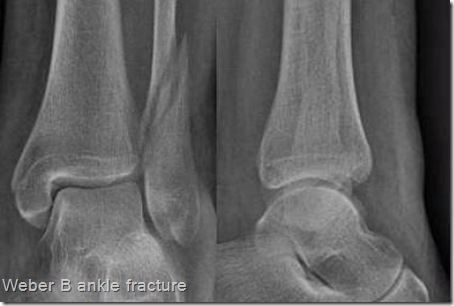This is a trans-syndesmotic fracture with usually partial - and less commonly, total - rupture of the syndesmosis. According to Lauge-Hansen, it is the result of an exorotation force on the supinated foot.
The fracture starts anteriorly at the level of the ankle joint and extends in a posterior and proximal direction.
- Stage 1 - Rupture of the anterior syndesmosis.
- Stage 2 - Oblique fracture of the fibula (this is the true Weber B fracture).
- Stage 3 - Rupture of the posterior syndesmosis or - fracture of the malleolus tertius.
- Stage 4 - Avulsion of the medial malleolus or - rupture of the medial collateral bands.



